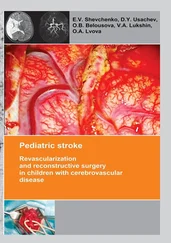In local areas of organs, tissues or blood vessels, the listed stages of pathogenesis are at different stages of development, and therefore, in each organ or tissue, all stages of the pathogenesis of aging are simultaneously implemented. The main pathological consequences of each of the listed stages of pathogenesis and their manifestations in proliferative-degenerative diseases of senile age are considered.
Hypoxia initiates two independent primary structural events.
1) Death of free living cells by apoptosis or necrosis (see above). 2) Degeneration and slowing down of regeneration of afferent nerve fibers of the autonomic nervous system (ANS).
The sympathetic division of the ANS is responsible for stimulating the metabolism of activity (catabolism) associated with the fight-or-flight response. The parasympathetic division of the ANS is responsible for stimulating resting metabolism (anabolism): “rest and digestion” and “feeding and reproduction”.
Afferent fibers are not divided into sympathetic and parasympathetic.
Metabolism at rest is less intense than in a state of physical activity, since the main consumer of free energy is skeletal muscles that are inactive at rest.
The state of activity is characterized by sharp ups and downs of metabolic activity, in contrast to the slow monotonic changes in metabolism in a state of rest. It is in connection with these differences that the degeneration of afferent fibers in the first place negatively affects the efficiency of the functioning of the sympathetic rather than the parasympathetic division of the ANS.
The weak link in autonomic regulation is the afferent, sensitive nerve fibers, each of which departs from a small group of cells or from single specialized receptors (bodies). A decrease, for one reason or another, in the number of cells in such a group or in a specialized receptor innervated by a separate axon leads to an increasingly rare use of the nerve fiber and, as a result, to its degeneration.
The most common cause of degeneration of afferent nerve fibers, apparently, is the death of nerve endings under conditions of deep and/or prolonged hypoxia. Nerve endings are the most distant from the neuron body and oxygen deficiency, leading to a deficiency of free energy, should primarily affect the delivery of nutrients and “building materials” necessary to maintain the integrity of nerve endings and for their regeneration, namely in the nerve endings.
Such degeneration of nerve endings belongs to the physiological category, in contrast to pathological degeneration caused by a violation of the integrity of nerve fibers as a result of injury or inflammation.
Afferent nerve fibers carry out negative feedback in the arc of an unconditioned reflex, turning off the activating effect of efferent fibers on innervated cells.
Due to the presence of a second, nonspecific afferent system of the ANS, the afferent innervation performs not only the passive function of switching off (inhibition) of the efferent part of the unconditioned reflex arc, but also an active function – inhibition of the central structures of the ANS. This function is provided by pacemakers in each small group of cells from which a single nerve fiber originates. Apparently, most of the time, it is the afferent fibers of the ANS that function, supporting with their signaling through the second, nonspecific afferent system, the inhibited state of the cells of the nuclei of the brain stem (including the hypothalamus).
In addition to the specific afferent system, there is a second or nonspecific afferent system. Information from peripheral sensory nerve endings, represented by many types of receptors (baroreceptors, mechanoreceptors, chemoreceptors, thermoreceptors) in this system is depersonalized, coming through collateral connections to the same neurons.
All nerve signals sent to the central nervous system along the sensory pathways of the nonspecific afferent system enter the reticular formation, which takes part in the activation of the cerebral cortex and in the control of the spinal cord. Signals from the periphery keep the reticular formation in a retarded state.
Signals entering the reticular formation from the cerebral cortex, for example, during stress or upon awakening, activate the reticular formation, thereby providing an integral response of the body to stress or to the initiation of wakefulness.
The nonspecific afferent nervous system of the ANS is an important part of the system of regulation of adaptation metabolism, which makes it possible to increase its rate tenfold.
The property of the most vulnerable link of autonomic innervation, afferent nerve fibers “owe” to several features.
1) The peripheral part of the afferent system of innervation is a “servant of two states” – the sympathetic and parasympathetic divisions of the ANS, working alternately, and the “master” of the central division of the ANS, participating in the regulation of its work through the second nonspecific afferent system. Afferent connections of the ANS function around the clock, which leads to their primary depletion and degeneration.
One of the most probable mechanisms for the depletion and death of afferent axons is the competition of two energy-consuming processes for a secondary energy source – a gradient of sodium cations on the plasma membrane. One of these processes is represented by the transmission of nerve impulses along an extended axon, and the other is the work of Na +-dependent glucose transport into a large volume of the cytoplasm. This is a system with mutual exhaustion, in which each of the processes slows down the other.
2) The presence of unique pseudo-unipolar neurons, when the same neuron provides energy-consuming transport of nutrients and mitochondria over long distances in two different directions, connecting the innervated periphery with neurons of the brain stem or with neurons of the spinal cord.
3) A large network of collaterals that communicate with the neurons of the second afferent system (additional energy costs).
4) A dense network of extended afferent nerve fibers of the ANS, each of which departs from a small group of cells of internal organs or blood vessels (high energy consumption for the operation of the network).
5) A decrease, for one reason or another, in the number of cells in such a small group, connected by electrotonic contacts and innervated by a separate axon, leads to an increasingly rare use of the nerve fiber and, as a result, to its degeneration.
As for the efferent part of the arc of the unconditioned reflex, it is devoid of this “disadvantage”, since its functioning is based on a huge number of neurons and neural networks of the central division of the ANS.
The efferent part of the arc of the unconditioned reflex of the sympathetic division of the ANS also has vulnerable links that contribute to its age-related degeneration.
1) The ganglia of the sympathetic part of the ANS, in which the neurons of the efferent part of the arc of the unconditioned reflex are localized, are supplied with blood (oxygen and nutrients) on a common basis with other cells of the body. while the neurons of the afferent part of the arc, located in the nerve nodes of the spinal cord and the brain stem, are supplied with oxygen and nutrients in priority, like the neurons of the central nervous system.
2) Degeneration of the afferent part of the arc of the unconditioned reflex, which provides negative feedback between the periphery and the central structures of the ANS located in the parts of the brain stem, leads to irreversible activation of the work of the efferent part of the arc. Long-term non-stop work of neurons of the efferent part of the arc leads to their depletion and death.
However, even before the onset of depletion and subsequent death of neurons in the efferent part of the arc, such irreversible activation of neurons in the sympathetic part of the ANS leads to a number of pathological manifestations. Apparently, it is the long-term functioning of only the efferent part of the autonomic reflex arc, without feedback from the periphery that leads to hyperactivity of the sympathetic nervous system and to the initiation of the development of metabolic syndrome with an increased risk of developing type 2 diabetes, cardiovascular diseases and premature mortality [11].
Читать дальше












